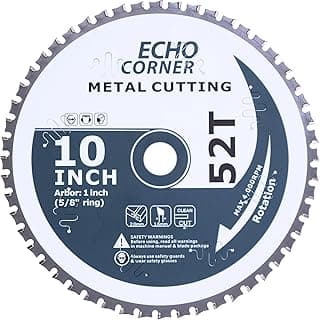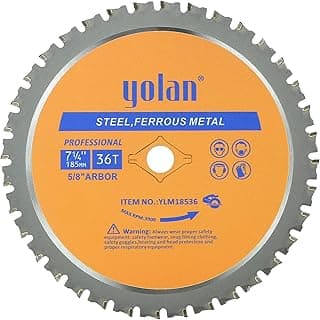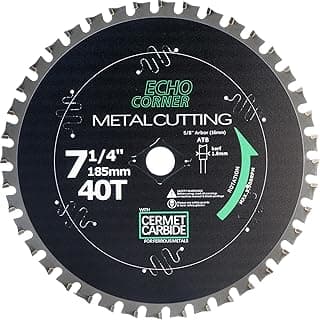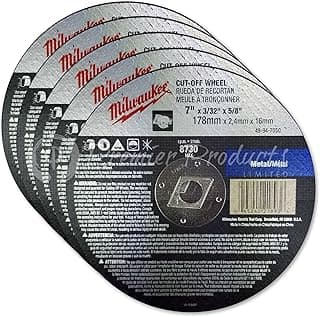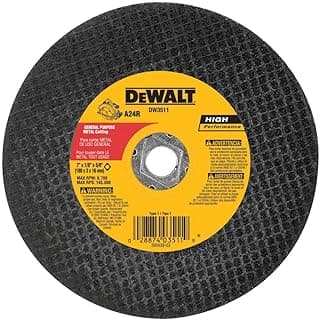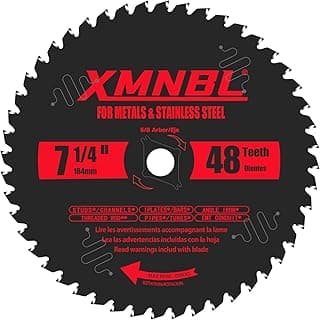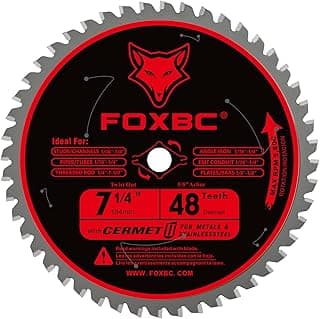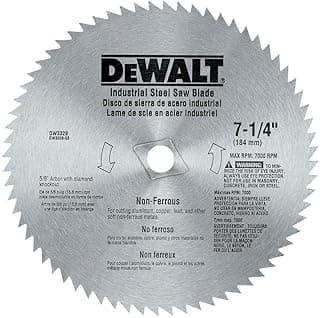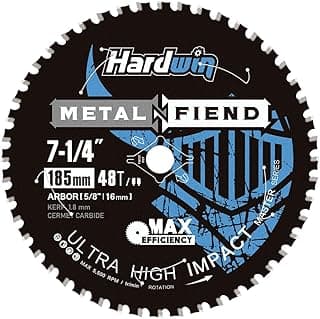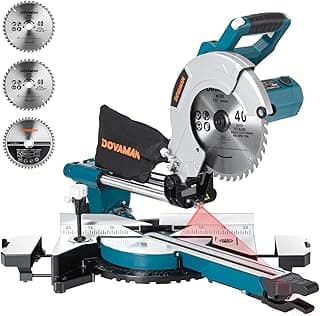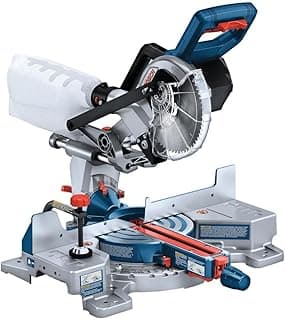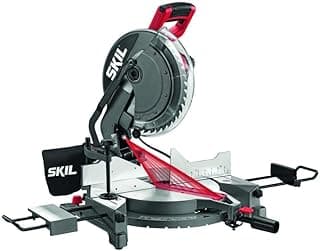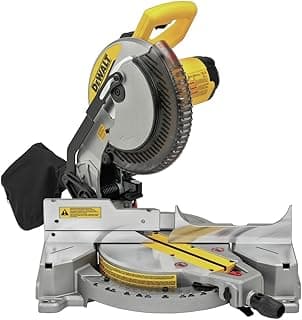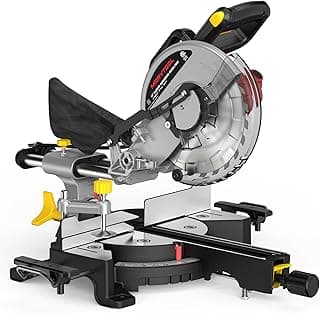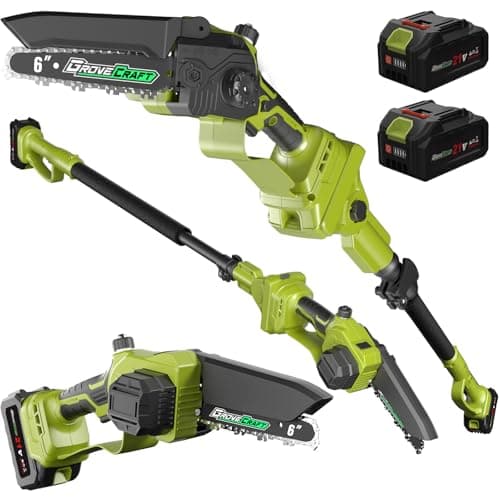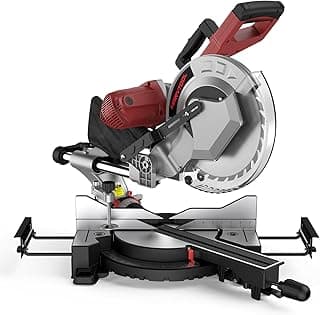Choosing the right blade can make or break a metal cutting project. That’s why selecting the best metal cutting circular saw blade is crucial for efficiency, precision, and safety. But with so many options on the market, how do you know which one delivers the cleanest cuts without wearing down too fast? Stick with me, because we’ll break it down step by step. First, we’ll compare different materials and teeth designs to see which works best for specific metals. Then, we’ll explore practical tips that professionals use daily. Whether you’re pairing it with the best band saw for metal cutting for specialized tasks, need a quick project using the best saw for cutting pvc for mixed materials, or are considering upgrading to a best metal cutting saw for heavy-duty applications, this guide will help you choose the perfect blade for your needs.
Top Picks
Best Precision: 10 Inch Metal Cutting Miter Saw Blade, 1-Inch Arbor
The Echo Corner 10-inch carbide saw blade is engineered for precision and efficiency across a variety of metal cutting tasks. Its 52-tooth cermet carbide design with Triple Chip Grind (TCG) ensures clean, accurate cuts on mild steel, aluminum, ferrous, and non-ferrous metals. The laser-cut stabilizer vents minimize vibration and noise while keeping the blade cool, helping to maintain its shape and cutting integrity over time. With a 1-inch arbor and included 5/8-inch reducing ring, this blade adapts to different center shafts, enhancing its versatility in various saw setups. The kerf tip thickness of 0.079 inches balances cutting speed with minimal material waste, while the 4000 RPM maximum ensures steady performance for professional or hobbyist applications.
From a customer perspective, this blade is highly valued for its ability to produce smooth, precise cuts without frequent maintenance. Users appreciate its durability and stability, noting that it remains sharp and accurate even after repeated use. The adaptability with multiple arbor sizes is a significant convenience, though some may find the 4000 RPM maximum limiting for extremely high-speed industrial applications. Overall, the Echo Corner blade offers reliable performance, long life, and reduced vibration, making it a practical choice for metalworkers seeking a high-quality cutting solution.
Best Durability: Diablo Steel Demon Cermet II Saw Blade for Metals and Stainless Steel
The Diablo 10.5-inch carbide saw blade stands out for its combination of durability and high-performance cutting. Equipped with advanced Ceramic and Metallic (Cermet II) teeth, the blade delivers up to 25 times longer life than standard grinding discs, significantly reducing downtime and the need for frequent blade changes. Its design minimizes heat buildup, providing cooler cuts and preventing discoloration or warping of metal surfaces. The optimized tooth geometry and laser-cut stabilizer vents reduce wandering and vibration, allowing precise, straight cuts with minimal rework. Additionally, the Perma-SHIELD coating offers protection against heat and corrosion, extending blade life even under heavy use. The blade is compatible with both corded and cordless circular saws, making it versatile for professionals and DIY enthusiasts alike.
From a user perspective, the Diablo blade is praised for its ability to maintain sharpness over long periods, enabling faster, cleaner cuts while keeping the workpiece cooler. Many customers highlight its precision and reduced vibration as significant advantages during metalworking tasks. The primary drawback noted is its higher price compared to standard blades, but most users find the investment worthwhile due to the extended lifespan and efficiency gains. Overall, it’s a reliable, high-quality blade for those seeking performance and durability in metal cutting.
Best Efficiency: Yolan 7 1/4” Metal Cutting Circular Saw Blade, 7-1/4-Inch 180 Blade
The Yolan 7-1/4-inch circular saw blade with 36 teeth is designed to provide fast, efficient, and precise metal cutting for both professionals and DIY users. Constructed from high-quality alloy steel with cemented carbide teeth, it delivers smooth, burr-free cuts across a variety of metal types, including channel steel, angle steel, round and square pipes, iron sheets, rebar, and color steel tiles. The tungsten carbide tips enhance wear resistance and extend the blade’s service life, while the overall steel construction ensures durability under repeated use. Its 1.8-millimeter thickness provides a balance between rigidity and cutting speed, making it suitable for electric circular saws used in heavy-duty and light-duty applications.
From a customer standpoint, users value the blade’s ability to cut cleanly and efficiently without producing excessive burrs, which reduces post-cut finishing work. The blade’s versatility across different metals and shapes is often highlighted as a major benefit. The main limitation is the relatively low number of teeth compared to larger or specialized metal-cutting blades, which may slightly affect cutting smoothness on very fine or delicate projects. Overall, the Yolan circular saw blade offers a practical combination of speed, durability, and precision for everyday metal cutting tasks.
FAQs
What is the best circular saw blade to cut metal?
The best circular saw blade for metal combines high-quality materials, precise tooth geometry, and a suitable tooth-per-inch (TPI) count. For most metals, blades made from bi-metal high-speed steel (HSS) or tungsten carbide-tipped (TCT) teeth are ideal because they resist heat and wear. Carbide-tipped blades are especially durable for frequent use on thicker metals, while HSS blades are suitable for lighter metal projects. When selecting a blade, consider the metal type: mild steel, aluminum, stainless steel, and non-ferrous metals may each require different tooth profiles and blade speeds. A blade with a thin kerf minimizes material waste and reduces the cutting load on your saw.
Which blade is best for cutting metal?
The best blade for cutting metal depends on several factors: metal thickness, hardness, and your saw type. Tungsten carbide-tipped circular saw blades are widely regarded as the top choice for cutting metal because they maintain sharpness longer than traditional steel blades. Bi-metal blades are flexible and resist chipping, making them ideal for angled or curved cuts. Some blades are optimized for ferrous metals, while others handle non-ferrous materials like aluminum and copper. Additionally, blades with alternate top bevel (ATB) teeth offer smoother cuts, while flat-top grind (FTG) teeth maximize cutting speed for straight cuts. Always match the blade size and arbor to your circular saw specifications to prevent accidents.
Is 18 or 24 TPI better for metal?
TPI (teeth per inch) is critical when cutting metal. A higher TPI, such as 24, produces a finer, cleaner cut and is excellent for thin metal sheets because it reduces burrs and rough edges. However, blades with higher TPI cut slower and may overheat if used on thick metals. An 18 TPI blade strikes a balance: it cuts faster than a 24 TPI blade while still maintaining reasonable smoothness, making it suitable for medium-thickness metal plates. In general, thin metals favor 24 TPI, thick metals favor lower TPI (14–18), and cutting speed should always be adjusted to avoid excessive heat buildup.
Can a circular saw blade cut metal?
Yes, circular saw blades can cut metal if the blade is designed for that purpose. Using a wood-cutting blade on metal can damage both the material and the blade. Metal-cutting blades are specifically engineered with hardened teeth and tooth patterns that withstand high friction and heat. When cutting metal with a circular saw, always use proper lubricants like cutting oil for ferrous metals to prevent overheating. Safety gear, such as gloves and eye protection, is essential, as metal shavings can be sharp and hot. For thin metal sheets, handheld circular saws work well, while thicker metals may require stationary saws or band saws for precision.
Final Thoughts
Selecting the best metal cutting circular saw blade requires understanding material type, blade composition, TPI, and cutting technique. Bi-metal and carbide-tipped blades provide durability and precision, while choosing the right TPI ensures smooth, efficient cuts. By matching the blade to your circular saw and following proper cutting practices, you can achieve professional results on any metal project. Whether for home workshops or industrial tasks, the right blade makes all the difference, improving performance, safety, and finish quality.

